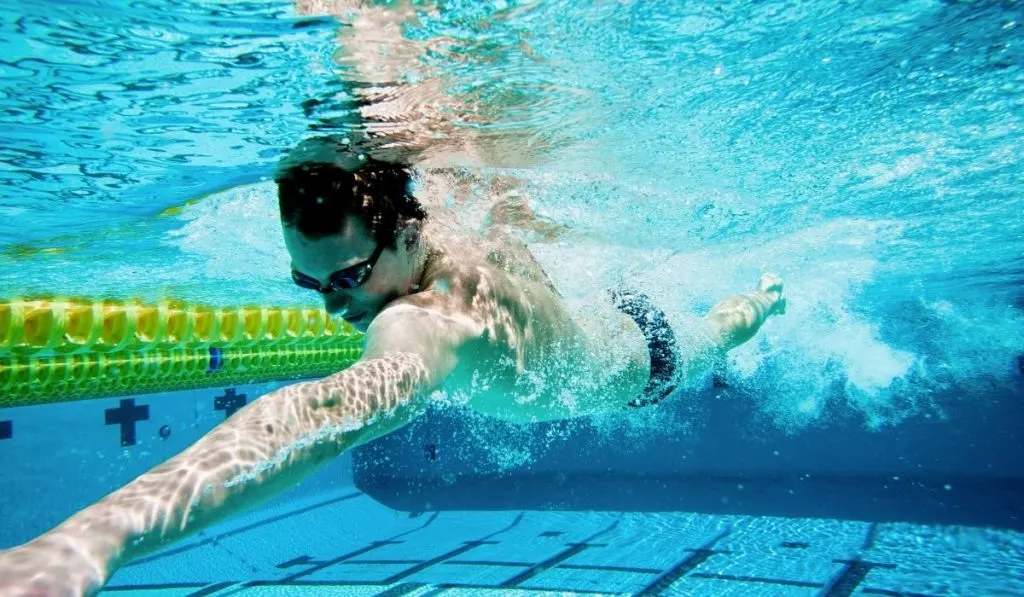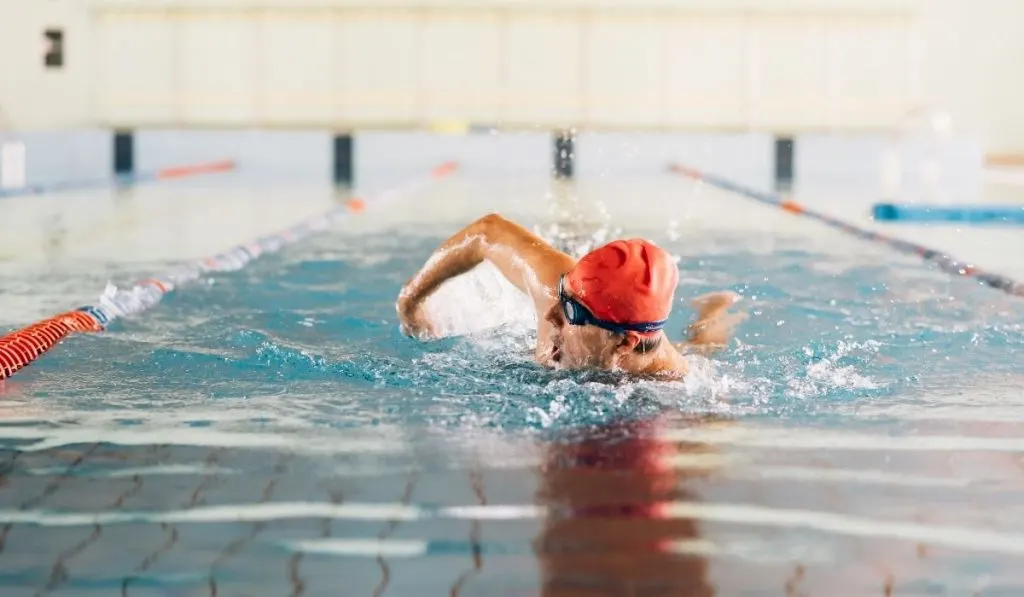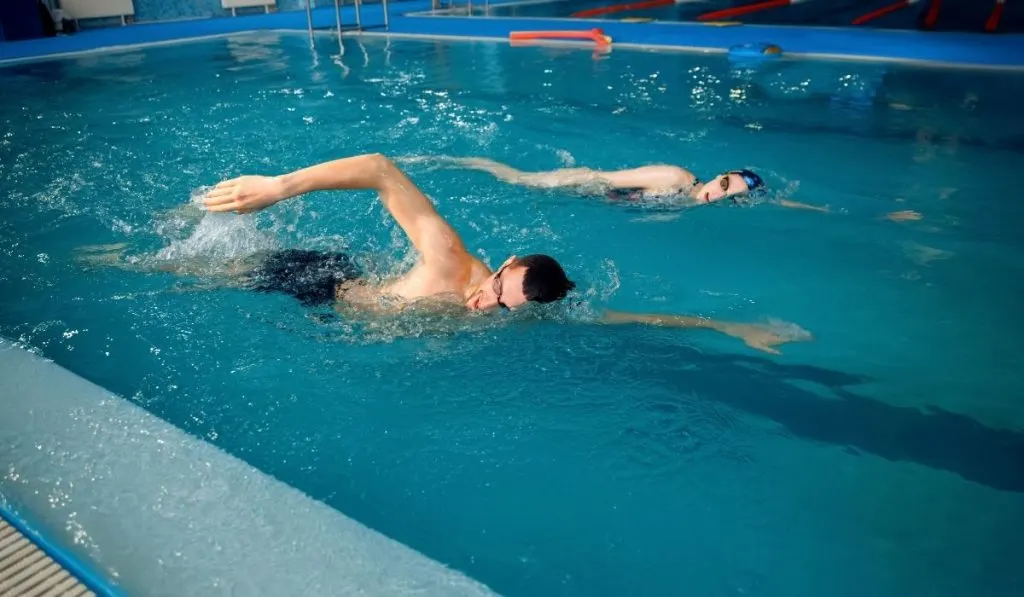Swimming is one of the healthy exercises that move almost all parts of our bodies. There are several swimming strokes that we can learn but the most basic one that even beginners learn is freestyle swimming. Freestyle is the fastest and most efficient swimming stroke in a swimmer’s arsenal.
Because beginners are not as experienced as seasoned swimmers and athletes, they may find it challenging to perform even some of the basic aspects of swimming, one of which is learning how to relax.
Learning how to relax while swimming is important to keeping your body afloat and helping you glide through the water easily.
If you are struggling to relax while swimming freestyle, this article will solve your problems once and for all. Here’s how:

Don’t stress out
Although it is easier said than done, being calm and relaxed in the water is the very first element to achieve maximum buoyancy when you swim. Most people who can’t stay relaxed when swimming tend to stress themselves out, which makes their bodies stiff.
What you can do is practice floating face down on the surface. Then, relax your body in the water before focusing your energy and limbs solely on moving your body forward. Take a breather when you feel like you’re forcing yourself and repeat the whole process once you’re relaxed.
Keep your head in a neutral position
Most people who swim freestyle tend to look forward rather than down. This can cause your legs and hips to sink, and cause you to lose buoyancy. In turn, you will have to kick harder to stay afloat.
Do this for a long time and your limbs can get tired, your neck will become strained, and it will cause you to stress yourself out. When you don’t feel relaxed, you will also lose your breath faster.
Don’t hold your breath
Controlling the way you breathe is important to avoid fatigue and losing your momentum in the water.
Don’t hold your breath; remember to inhale in a rhythm and exhale constantly through your nose and mouth while your face is underwater.
You can time your inhales to every stroke, or as infrequent as every third stroke on both sides of your body to avoid running out of breath. This way, you have a good breathing pattern that is easy to remember. Breathe regularly and be conscious of holding your breath.

Swim slowly and glide naturally
The notion that the harder we work, the better we get is not completely practical, especially while swimming.
The harder you kick or paddle through the water, the harder it will be for you to swim and glide across the surface of the water. Eventually, you will begin to stiffen all your muscles, and slowly, you will sink.
To avoid this, you must become “one” with the water. Feel your body weight and swim slowly. The water will support your body and hold you up as long as you are not forcing any movement.
Align your head with your spine
By aligning your head with your spine, you can cut through the waterline with the top center of your head. In this position, your face will be pointed at the bottom of the pool. This will allow you to glide and swim swiftly, reducing drag and resistance on the water surface.
Pace your swimming according to your ability
One of the worst things that you can do while swimming is to try to push yourself above your limit. This will quickly drain your energy when you try to go really hard from the start.
When you feel tired, your body position will change, causing you to increase drag. In turn, this will force your legs to kick harder and put too much stress on your motion. Unless you are training for a competition, take it easy.
Don’t over-rotate your body
Swimming with a smooth body rotation takes a lot of practice. You can’t force your body to cut through the water when you don’t feel relaxed. Experienced swimmers are able to swim swiftly because they don’t over-rotate their bodies. To do this, you shouldn’t rotate your torso more than 45 degrees on both sides.

Reduce excessive kicks
One of the best ways to conserve more energy while swimming is to kick from your hips.
Your legs are some of the biggest muscles that require more energy to propel your body forward. But when you’re kicking from your hips, you’re using some of the buoyancy from the lower part of your body to stay afloat. Your hip-flexor muscles will be the primary muscles that can drive your body forward without kicking too hard on the water.
Hence, you won’t put too much stress on your body if you’re not using too much energy.
Final Thoughts
Above all, the key to relaxing while swimming freestyle is the trust you put in yourself. The size of your body doesn’t dictate how well you can stay afloat and glide easily along the water surface. You must learn to let your body become one with the water, and then enjoy the process. Don’t stress out and most importantly, listen to your body.
Citations
- https://www.swim-teach.com/relax-when-swimming.html
- https://www.swimteaching.com/2019/07/how-to-relax-while-swimming-learn-to.html
- https://www.triathlete.com/training/getting-started/seven-most-important-aspects-of-freestyle-swimming/
- https://www.swimnow.co.uk/stroke-improvement/how-to-swim-freestyle-without-getting-tired/
- https://www.atlantaswimacademy.com/blog/swimming-tip-relax
- https://mediterraswim.com/2019/11/09/examples-tension-relaxation-freestyle/
- https://www.enjoy-swimming.com/freestyle-swimming-technique.html
